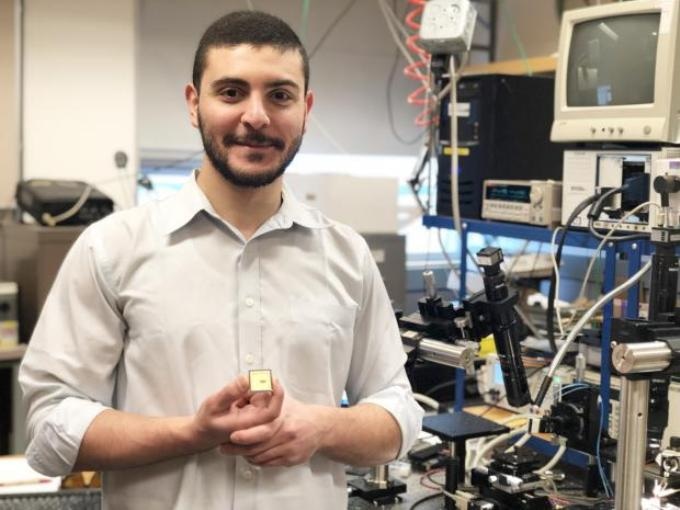Feb 5 2019
Imagine standing in a checkout line at a store with 10 other people, waiting for one cashier to serve you. Now imagine how much faster it would be if there were 10 cashiers available. Similarly, the operation of a silicon electrical chip can be substantially improved by introducing photonics: more information is routed using photonics wires on chip allowing information to be processed more efficiently compared to traditional copper electrical wires.
 Hossam Shoman, a PhD student in the Department of Electrical and Computer Engineering.
Hossam Shoman, a PhD student in the Department of Electrical and Computer Engineering.
“Instead of serving one customer at a time, you’re serving 10 customers at the same time,” explains Hossam Shoman, a PhD student in the Department of Electrical and Computer Engineering. “The multiplexing of frequencies that make up light makes it faster because you’re sending more information at once.”
Hossam is part of a research team, which includes ECE graduate Hasitha Jayatilleka and professors Lukas Chrostowski and Sudip Shekhar, that recently designed an integrated element that can monitor light precisely and control it on a chip using just a single element. This means better on-chip real estate management in devices, resulting in smaller devices without sacrificing performance.
“This will reduce the footprint compared to other devices and allow for large scaling of photonic systems,” says Hossam. “You can continue boosting the performance of devices by increasing the number of cores of devices, which is becoming difficult to do using electrical wires because they overheat and decrease the performance of the chips.”
Hossam believes that their research will benefit the biomedical industries by enabling the development of cost-effective biosensors that can help detect early stages of cancers. The technology will also make medical devices more accessible and affordable.
“We’re working on integrating and packaging the chips in cost-effective ways for consumers and countries that can’t afford expensive medical equipment,” says Hossam. “Imagine a sensor on the back of your phone that could detect your blood sugar level.”
The paper, titled “Photoconductive Heaters Enable Control of Large-Scale Silicon Photonic Ring ResonatorCircuits,” was recently published in Optica.